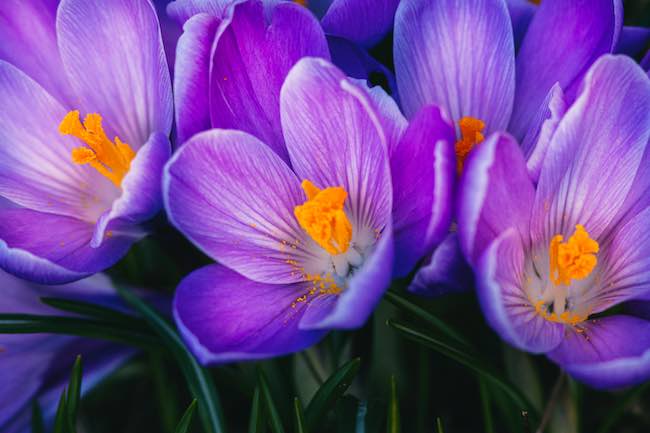Creating Spring Colour with Autumn Bulb Planting

Planting bulbs in the autumn is a strategic gardening move that promises a vibrant spring display in your UK garden. Follow these steps to ensure a burst of colour come springtime.
Selecting Bulbs:
Choose high-quality, healthy bulbs from reputable sources. Look for bulbs that are firm and free from blemishes or signs of decay.
Timing:
The best time for planting spring-flowering bulbs in the UK is from September to November, before the ground freezes.
Location:
Opt for a well-drained spot with at least partial sun exposure. Most bulbs thrive in such conditions. In your soil you might need to add some horticultural grit to the soil to improve the drainage.
Soil Preparation:
Ensure the soil is well-draining. If it tends to retain water, consider adding compost and horticultural grit to improve drainage.
Planting Depth:
A general rule of thumb is to plant bulbs at a depth of about 2-3 times their height. For instance, if a bulb is 2 inches tall, it should be planted about 4-6 inches deep.
Spacing:
Follow the recommended spacing guidelines for the specific type of bulb you’re planting. This information is usually provided on the packaging.
Orientation:
Plant bulbs with the pointed end facing upwards. If in doubt, bulbs are generally wider at the base and have a more pointed tip.
Fertilising:
Mix in a balanced, slow-release fertiliser with the soil at planting time. This provides essential nutrients for healthy growth.
Mulching:
Applying a layer of mulch (such as straw or bark chips) over the planted area helps regulate soil temperature and moisture levels.
Watering:
After planting, give the bulbs a good soak to settle the soil and encourage root growth. Water sparingly thereafter, as bulbs can rot in overly wet conditions.
Protection from Pests:
Consider measures to deter squirrels, rodents, and other animals that may be attracted to bulbs.
Labelling:
Label the planting areas, especially if you’re planting different types of bulbs. This will help you keep track of what’s where.
Maintenance:
Monitor soil moisture levels as winter approaches. If there’s an extended dry spell, provide supplemental watering.
Spring Care:
Once spring arrives and the shoots start to emerge, keep an eye on them for signs of pests or diseases. Take appropriate action if necessary.
Enjoy the Blooms:
As spring arrives, you’ll be rewarded with a colourful display of flowers. Take time to appreciate the beauty and fragrance of your garden.
Popular Spring-Flowering Bulbs for UK Gardens:
Daffodils (Narcissus): Known for bright, trumpet-shaped flowers. They are deer-resistant and can naturalise over time.
Tulips (Tulipa): Available in a staggering array of colours and bloom forms. They are best treated as annuals or lifted and stored after flowering.
Crocuses (Crocus): Some of the earliest bloomers, often popping up even when there’s still a chill in the air.
Snowdrops (Galanthus): Delicate, nodding white flowers that often appear in late winter or very early spring. Although they are often best planted in the green which means as clumps start to grow they are dug up and divided and replanted in another location.
Hyacinths (Hyacinthus): Known for highly fragrant, compact flower spikes.
Alliums: Add a unique, architectural element to the garden with their globe-shaped blooms.
Remember to check the specific planting instructions for each type of bulb, as there may be variations in planting depth and spacing. Additionally, consider mixing different types of bulbs for a diverse and stunning spring display in your UK garden.